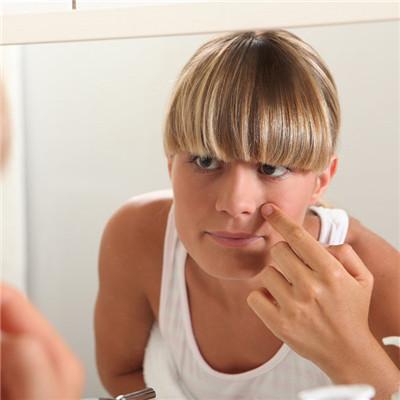Symptoms of mixed nevi
summary
Mixed nevus: appearance similar to the junction nevus, more common in adolescents, sometimes hair growth. The pathological changes of mixed nevus have the characteristics of both borderline nevus and intradermal nevus. The nevus cell population is found in the dermis or epidermis. The nevus cells in the lower part of mixed nevus may be fusiform, embedded in collagen tissue, and contain little or no melanin. There is little or no inflammation in the dermis. More common in older children or adults. Most of the lesions are slightly higher than the skin, and some are papilloma like, yellowish brown to brown, with or without hair on the surface. Nevus itself has little effect on health, can not be treated, mostly because of cosmetic needs or malignant transformation when considering treatment. At present, the commonly used treatment methods include surgical resection, chemical drug corrosion therapy, laser therapy, liquid nitrogen freezing, electric ion, microwave and electric cauterization.
Symptoms of mixed nevi
Mixed nevus is the nevus cell nest located in the epidermis and dermis, slightly raised or papillary, with malignant tendency, such as: nevus suddenly darkened, enlarged, local mild itching, burning or pain, surface depilation, ulceration, bleeding or inflammation phenomenon, as well as the edge of the satellite nevus are mostly signs of malignant transformation.

It is composed of nevus cells and is characterized by the arrangement of nevus cells into nests. Typical nevus cells are oval or cuboidal, with obvious homogeneous cytoplasm, large nucleus, round or oval, pale, light stained, and vesicular. Because the life cycle of nevus cells usually goes through different stages of development, maturation and aging, and gradually moves from epidermis to dermis with age, the morphology of nevus cells in different parts of the skin is different.

Nevus cells in the upper dermis are epithelioid and often contain melanin. Nevus cells in the middle dermis are similar to lymphoid cells, while nevus cells in the lower dermis are similar to fibroblasts or Schwann cells. Nevus cells in the middle and lower dermis rarely contain melanin. Nevus cell nests are found in the epidermis and dermis. The nevus cells in the upper dermis are cubic in shape, rich in cytoplasm and contain varying amounts of melanin particles. The nevus cells in the middle of dermis are small, with less cytoplasm and melanin, usually nest like and clear boundary.

matters needing attention
Generally, no treatment is necessary. Because of the 10% possibility of melanoma in congenital nevus cell nevus, it is generally better to remove it. Acquired nevus cell nevus, unless there are signs of malignant transformation (sudden increase in volume, dark color, desquamation on the surface, erosion, exudation, scab, bleeding, ulcer, inflammatory swelling: conscious pain or pruritus, satellite lesions around), should be removed immediately. Borderline nevus, mixed nevus occurred in palms and soles, waist circumference, armpit, groin and other vulnerable parts, can also be considered resection.












